Which ancient China period is the most fascinating? The Tang Dynasty may be the best choice.
As the most powerful and advanced existence in the world at that time, the Tang Dynasty has strong national power, a booming economy, and splendid culture. There were prosperous scenes of different countries from all over the world coming to visit, but also the wonderful legends and stories of countless capable people.
This undoubtedly provides a wealth of creative materials for contemporary film and television creation, among which the suspense works are quite representative. From "Amazing Detective Di Renjie" starring Liang Guanhua, "Detective Dee" series of films directed by Xu Ke, "Legend of the Demon Cat" directed by Chen Kaige, to "The Imperial Coroner" and "Luoyang" in the past two years.
Nowadays, when a new drama "Strange Tales of Tang Dynasty" of the same type is popular, let's follow Peng Xiao Xian and the four elements: city, palace, market, and stagecoach to explore the story of the Tang Dynasty.
01 City
At the beginning of the drama "Strange Tales of Tang Dynasty", Chang'an county magistrate Wu Daqi was killed by a demon cat and died strangely. And the main character Su Wu Ming takes over the tricky job, when he stood on the Mingde Gate and issued a sigh to the prosperity of the Tang Dynasty, the camera, with a bird's eye view, swept the whole of Chang'an City, and bringing its grandeur to the viewer's attention.
Chang‘an City, expanded from Sui Dynasty Daxing City, was the capital of the Sui and Tang dynasties. It was the largest city in the world at that time, with the most magnificent architecture and the most standardized planning and layout.
It plans according to the traditional thought of "the unity of nature and man" in ancient times, the statement of "Bagua" and elements such as the ancient architectural style.
Chang'an city is composed of three main parts.
- Waiguo Cheng (外郭城), also known as Fangshi, contains the residential area (Fang, 坊) and the trading area (Shi, 市)
- Gong Cheng (宫城, Imperial Palace)
- Huang Cheng (皇城, Central Government Offices)
Tang Chang 'a City covers an area of 87.27 square kilometers, all industries are booming. Tang Dynasty poets often say that Chang'an City has a population of one million. Both the scale and structural functions of the city show the superb level of architectural planning and design of ancient Chinese civil settlements.
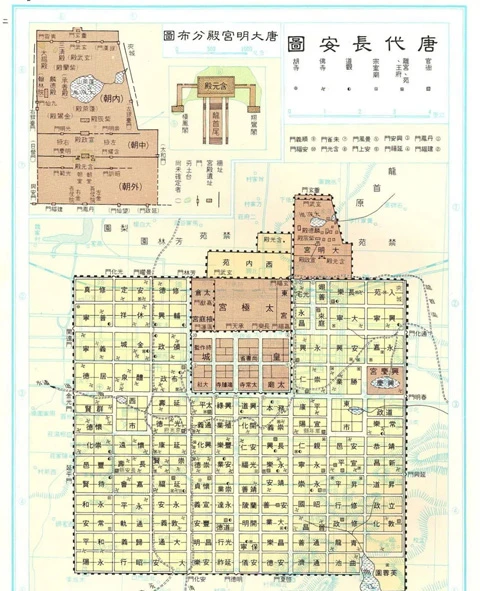
Chang'an City
View the complete map of Chang'an City (from the drama The Longest Day In Chang'an)
According to records, after the establishment of the Sui Dynasty by Yang Jian, the initial capital was set in Han Chang'an City, but because there had been dilapidated small, serious water pollution, then decided to build a new capital, namely the Daxing City, the name Daxing originated from the Yang Jian was named as the Duke of Daxing.
The capital city was started to be built in 582 AD, specifically planned and designed by Yu Wenkai, and the Gong Cheng and Huang Cheng were built in just nine months.
The Mingde Gate, where Su Wu Ming stands in the drama, was also built during this period. It was an important place for the imperial court to hold major celebrations and diplomatic activities at that time, so it was also known as the "Chang‘an National Gate" in the Sui and Tang dynasties".
In 583 AD, the Sui Dynasty officially moved to the new capital. In 613 AD, Emperor Yang Guang began planning to build Waiguo Cheng, and the overall pattern of the city was basically formed. After Sui, the Tang Dynasty continued to determine the capital here and changed its name to Chang'an City, and further built the capital.
In addition to Chang'an City, there was another capital during the Sui and Tang Dynasties. In 605 AD, Emperor Yang Guang moved to Luoyang and ordered to build of Dongjing Luoyang City. Later, a generation of queens Wu Zetian also settled here.
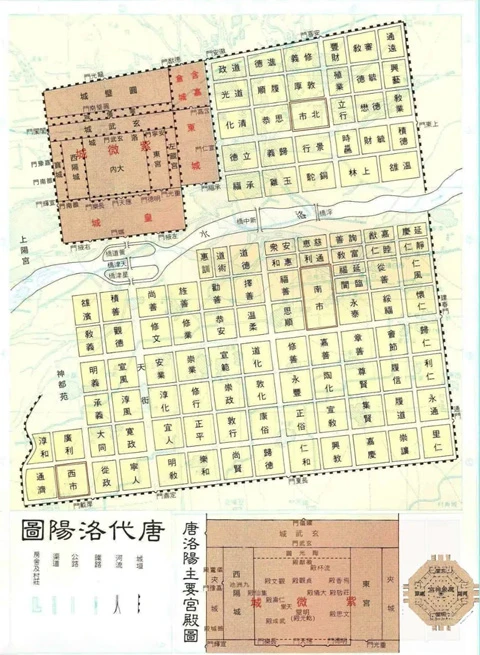
Luoyang City
02 Palace
In the capital city, the most magnificent architectural complex must be the imperial palace. As a symbol, the size of imperial palace is highly representative. In the Tang Dynasty, there were four famous palaces:
- Taiji Palace (太极宫)
- Daming Palace (大明宫)
- Xingqing Palace (兴庆宫)
- Ziwei City (紫微城)
Taiji Palace began construction in the same year as Daxing City. In Sui Dynasty it was called Daxing Palace, and in 710 AD, Emperor Ruizong renamed Daxing Palace into Taiji Palace. Taiji Palace is located north of the central axis of Chang’an City. Its northern gate is well-known due to the "Xuanwu Gate Incident".
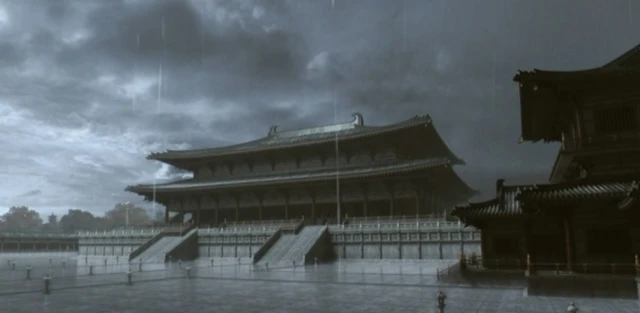
Conceptual restoration of Taiji Palace
Ziwei City was built in the first year of Emperor Yang of the Sui Dynasty (605 AD) and was named because it symbolized the Ziwei Palace, the residence of Emperor Tiandi. It covers an area of about 4.2 square kilometers, six times that of the Forbidden City in Beijing.
The whole palace was built by 1.7 million people in the 60 days. After the completion of construction, it is the model of the palace planning and architectural model after the Sui and Tang Dynasties. Later, it continued to expand after the Tang Dynasty, it became more magnificent.
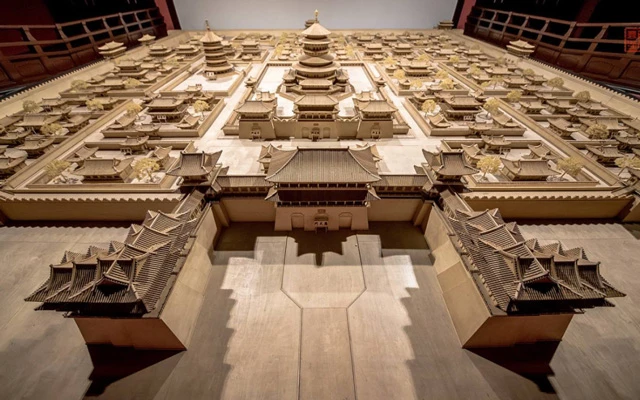
Model of Ziwei City
The Daming Palace was built in the eighth year of Zhenguan (AD 634) and covers an area of about 3.2 square kilometers. The whole palace can be divided into two parts: the Qian Chao (dominated by the court meeting) and Nei Ting (mainly residential and had banquets). The classic Drama "Palace of Desire" directed by Li Shaohong, as the name, tells the story of Daming Palace.
The designers of Daming Palace are not clearly recorded. However, according to the official position, the designer should be Yan Liben, the famous painter and author of "Emperor Taizong Receiving the Tibetan Envoy".
In addition, there is a strange legend about the origin of the Daming Palace. At the beginning of the construction, the site had dug out a bronze mirror, not only can see the internal organs of the body but also the loyalty of officials and the prosperity of the country. After the completion of Daming Palace, this mirror was hung on the hall to deter evil spirits, and later there was the saying "bright mirror hanging high".
Legends are fantastical, but it is true that the Daming Palace once influenced the rise and fall of the Tang Dynasty. The Tang Dynasty lasted 289 years and had 22 emperors, 17 of whom handled government affairs in Daming Palace. Therefore, it was the dream of all talented people at that time to enter Daming Palace to meet the emperor.
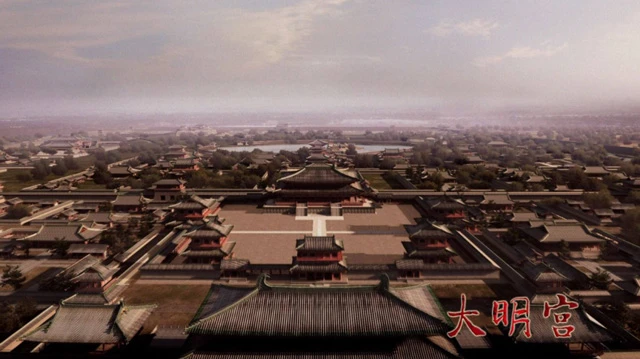
Conceptual restoration of Daming Palace
Xingqing Palace is closely related to Emperor Xuanzong. Xingqing Palace is located in Xingqing Fang, covering an area of 1.34 square kilometers. It was once the residence of Tang Xuanzong. After he acceded to the throne, it was massively expanded to become an imperial palace.
Xingqing Palace is the most special, the former palaces usually follow the pattern of "front hall and back yard", while Xingqing Palace is the opposite. Even the main hall of Xingqing Palace is not on the central axis of the palace.
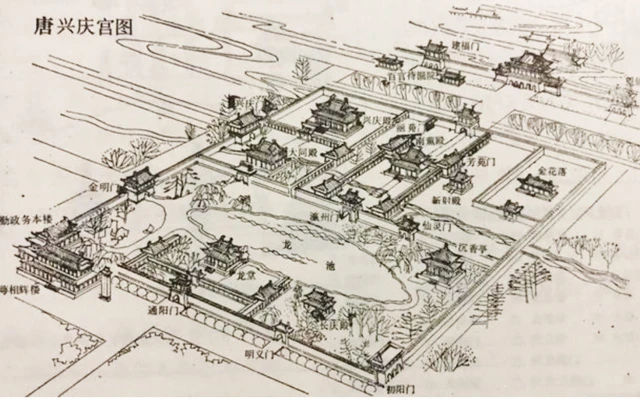
Xingqing Palace
03 Market
The Chinese word "Mai Dong Xi (买东西, buy something)" originally refers to the two major markets in Chang'an City of Tang Dynasty, the "Dong Shi (东市, east market)" and the "Xi Shi (西市, west market)". From these two words, we can see that Tang culture had a profound influence on later generations.
So what was sold in the East and West markets of Chang'an City in the Tang Dynasty?
The drama "Strange Tales of Tang Dynasty" has made an introduction for everyone, when the main characters were working on the Chang'an red tea case, they came to the west market, and Kang Yuanli, the west market officer, made a general introduction to Su Wuming and the audience.
Both the east and west markets have 220 rows. Because most of the dignitaries live in the east, there is a relatively more orderly, and more handicraft industry. While the west market is the place where the Hu merchants gathered, and the spices, jewelry, and all kinds of rare things from the Western Regions and even more distant places are concentrated. In short, the east market is aristocratic, and the west market is more popular for normal people.
And these features are highly correlated with the location factors of the two markets. According to the map of Chang'an City, the Taiji Palace was in the middle of the city, while the Daming Palace and Xingqing Palace were located in the east. For the convenience of the imperial court meeting, the civil and military officials preferred to buy houses in the eastern part of the city, thus creating an upscale residential area for the nobility.
In addition, many places around the country opened their offices in Beijing. These are mostly in Pingkang Square and Chongren Square, which is a place where local officials gather. What’s more, the Ministry of officials chose the hospital, the Ministry of the South Court and the State Children's College, and other examination and education institutions that were also adjacent to the east market.
As a result, the east market was close to the gathering place of distinguished officials and literati. The restaurant industry, entertainment industry, and brothel industry were exceptionally developed, while new industries such as ink brush , engraving, and printing zither businesses flourished, and Chongren Fang gave rise to the largest hotel street in Chang'an City. Throughout the east market, buyers and sellers tended to trade and consume at a higher level, which was relatively expensive.
However, "expensive" does not mean "rich". The rich is the west market feature, It This has to do with the composition of the population of the city's west side.
There are three reasons. Firstly, in Chang'an, merchants were basically forbidden to live around the residences of the noble officials, so most of them lived around the western city.
According to surviving historical sources, the western city was full of stores, mostly dealing with clothes, candles, cakes, medicines, and other daily necessities, with more than 50 stores, while the eastern city had about 30 stores, in terms of commercial atmosphere, the west market was obviously more prosperous than the east market.
Secondly, the west market was close to the Jin Guang Gate, the western gate of Chang'an, and the Hu people from the western region gathered in the west market. These Hu people were divided into those who had not yet returned from tribute and those who were engaged in trade. Along with the increase in the number of merchants, jewelry stores, wine stores, and restaurants with exotic characteristics were concentrated in the west market.
Thirdly, although the economic level of the noble officials was higher than that of the common people in Chang'an, they either had special institutions to supply their goods, or sent people to purchase them abroad or invited them to trade with the government, so they basically did not need to visit the market.
In this way, the east and west markets presented two completely different characteristics by their differentiation, and all kinds of groups gathered in the middle, showing the all-embracing Tang atmosphere. In addition to the east and west markets, a special market, the palace market, was set up in the middle and late Tang Dynasty, and served mainly the royal family and the palace.
Let's talk about the mysterious "Gui Shi (鬼市, ghost market)". In "Strange Tales of Tang Dynasty", Su Wuming went to the ghost market to investigate the case. There is an eerie, mixed, ominous atmosphere, full of a sense of wonder. So, in history, did ghost markets really exist? Is the atmosphere the same?
The answer is that "ghost markets" did exist, but they were not as spooky as they are portrayed in films and televisions, and similar to the current "night markets".
The "night market" was an indirect product of the social system of the Tang Dynasty. At that time, the court, in order to efficient management, the "market system" and "curfew system", the former will be the city for zoning management, requiring that in addition to special markets, people can only trade in a fixed place. According to the records, there were 108 Fang in Chang'an during the Tang Dynasty, 103 Fang in Luoyang, and about 60 Fang in Yangzhou and Suzhou.
The latter was the rule that people could not go out at night without any reason. Since there was no electric light in ancient times, thieves and assassins were prone to act at night, and the "curfew system" was adopted to maintain order. Anyone who walked on the streets of the city without a reason at the night, they were sentenced to 20 lashes for violating the law.
In this case, the people began to organize trading freely in the early hours of the morning, when the officials were asleep. Gradually, ghost markets came into being. Since it was built for the people to demand their own, the ghost market bought mostly everyday goods. The most popular item is matches.
04 Post station
The case of "Gan Tang Yi" in "Strange Tales of Tang Dynasty" is very exciting, with its shenanigans and bitterness, like a microcosm of the dynasty.
The place where the case took place, the Yi Zhan (驿站, post station), is one of the representatives. In ancient times, a post station was a place for people who delivered official documents and military intelligence or for officials to change horses and stay on the way.
Before Han Dynasty, it was called Chuan (传), and in Han, Tang, and Song Dynasties, it was called Yi. As a facility of ancient transportation and information transmission system, the post station is an important witness and symbol of history and social development.
Ancient China was one of the first countries in the world to establish an organized transmission information system. It can be traced as far back as more than 3,000 years ago to the oracle bone inscriptions of the Shang Dynasty. Passing by horse was called post, and post transmission was an early organized way of communication.
During the Zhou Dynasty, there were beacon towers and postal stations to transmit military reports. During the Qin and Han dynasties, a whole set of postal transmission systems was formed. Especially in the Han Dynasty, the documents transmitted were divided into grades, and documents of different grades had to be transmitted by special persons and horses according to the specified order and time. These documents had to be registered and the time was indicated to show the responsibility.
In the Tang Dynasty, the development of post stations reached a stage of unprecedented prosperity. According to the Tang Six Classics, there were 1,639 post stations. At that time, there were seven post roads in a radial pattern, centering on the capital Chang'an, leading to all parts of the country.
Due to different location factors and importance levels, post stations in Tang Dynasty were also graded. Generally speaking, the scale and building quality of the post stations in important locations or close to Chang'an were better than those in other places.
For example, there were seven grades of land stations, with the number of horses varying from 7 to 75, all of which were officially assigned; there were three grades of water stations, and four grades of both water and land. These ranks marked the number of stage-hands, horses, and land that could be owned.
It is worth mentioning that as an important part of the post, one of the inspection standards of the superior for each post was the effectiveness of feeding the horses. If the horses died, the person in charge of the post station was responsible for it.
Since the post stations were all over the country, did the government pay for their construction? No, not really.
Since the construction of post stations cost a lot of money, and since the post stations in the Tang Dynasty were for the public use of the government and the people, they were often built through public-private partnerships, with the rich local families financing the construction of the post stations, and the rich families were also able to pay dividends for the revenue generated during the operation. Civilians, on the other hand, had to pay a certain amount of fees to support the expenses of the post stations and maintain their operation.
In addition to the official personnel, merchants are also an important group of people who use the post station. For them, the post station is like a hotel. Because the post station is equipped with certain armed forces, it can not only solve the problem of food and accommodation, but also ensure the safety of their personal and property, and they only need to pay certain goods to live in the post station. Of course, this is only when the post is not officially used, once the post is officially used, no one else can enter.
After the last part, it is time for us to end our trip to the great Tang Dynasty. I believe that with the general understanding of the city, palace, city and post, you will have more different feelings when you watch the related works again. The articles only give a glimpse of the Tang Dynasty, more stories of the Tang Dynasty need to be presented by film and television creators, and we look forward to more Tang Dynasty film and television works in the future.
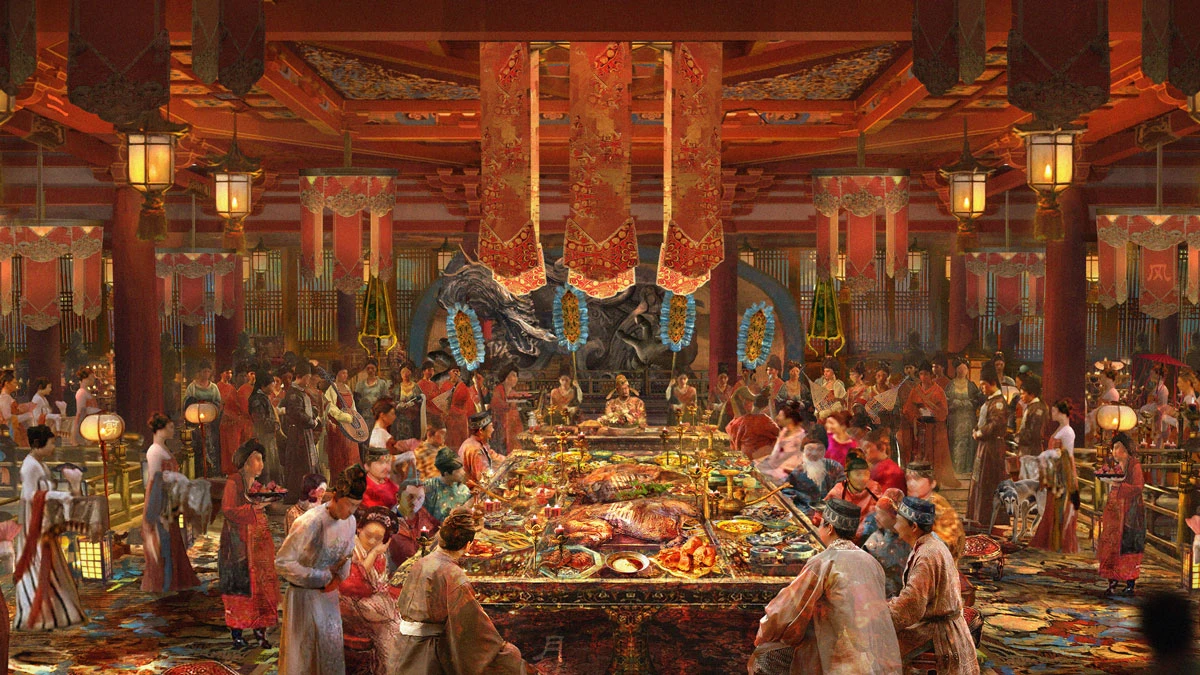

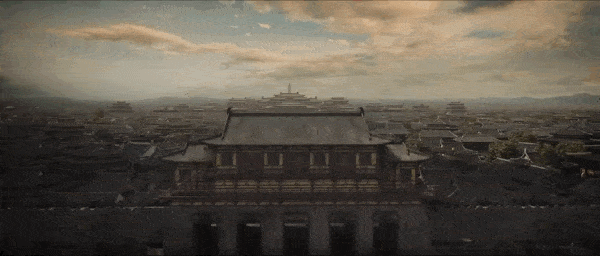
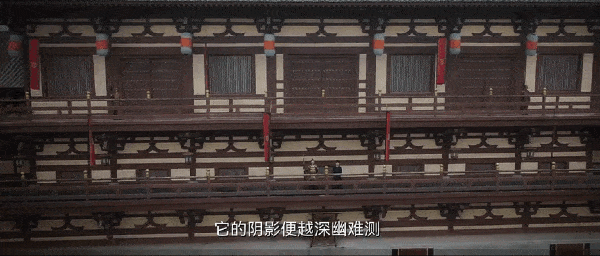
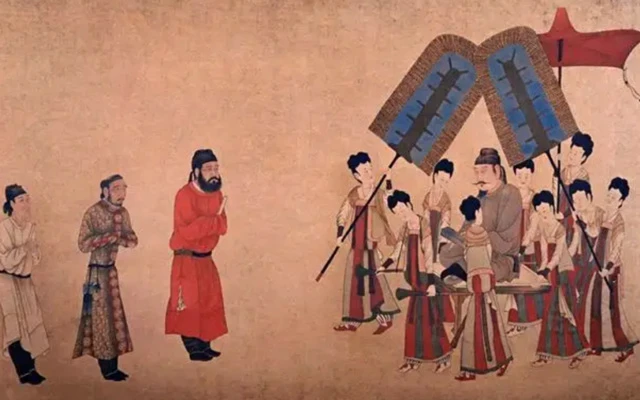
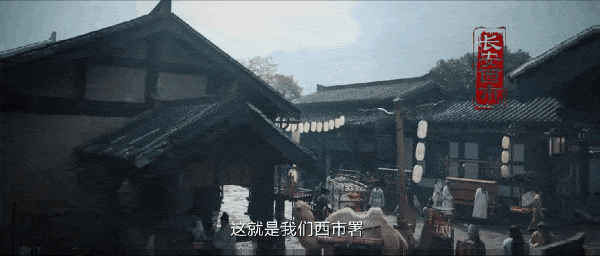
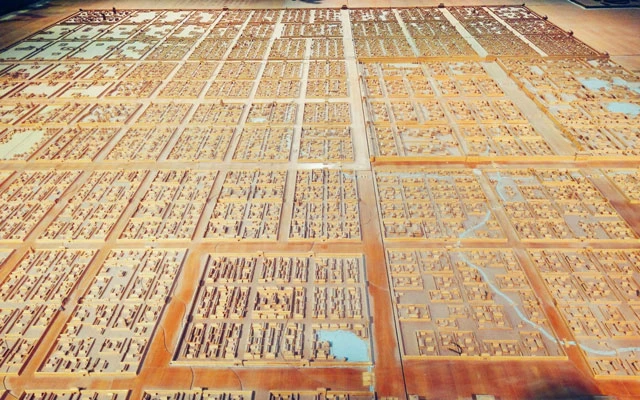
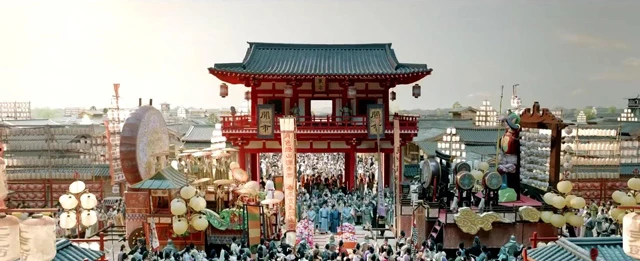
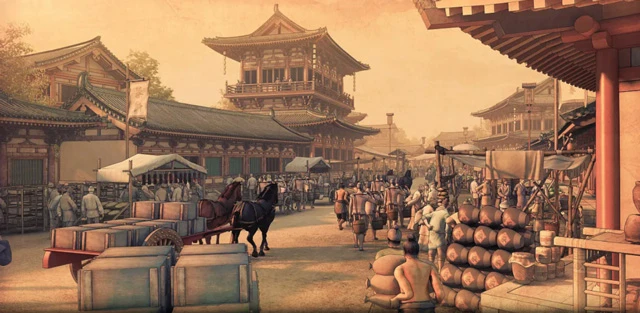
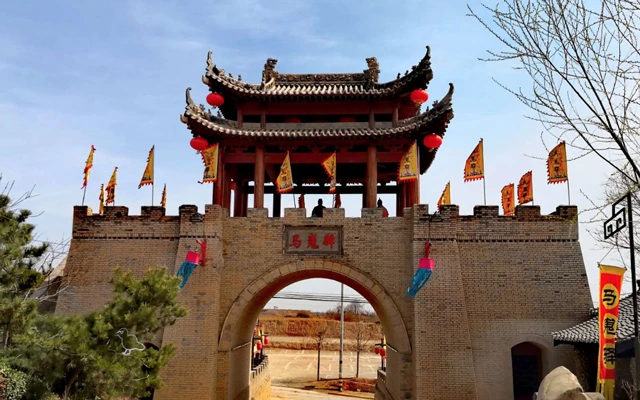
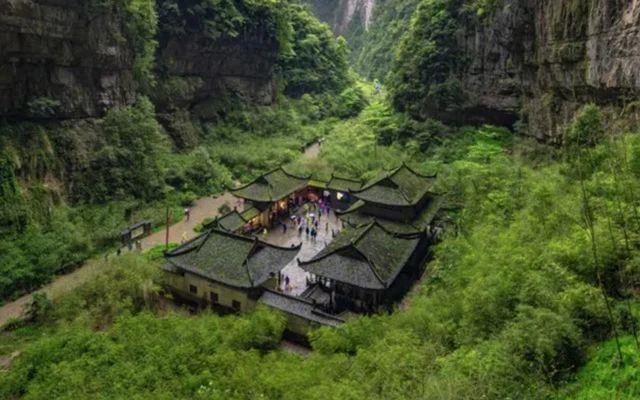


I once researched these to recreate what a grand home would've been like back then, in my Genshin Impact's Serenitea Pot. It's still there, and I go there from time to time to chill.
Ini seperti keajaiban, luar biasa indah
Sangat mengagumkan
Waaw😍👍